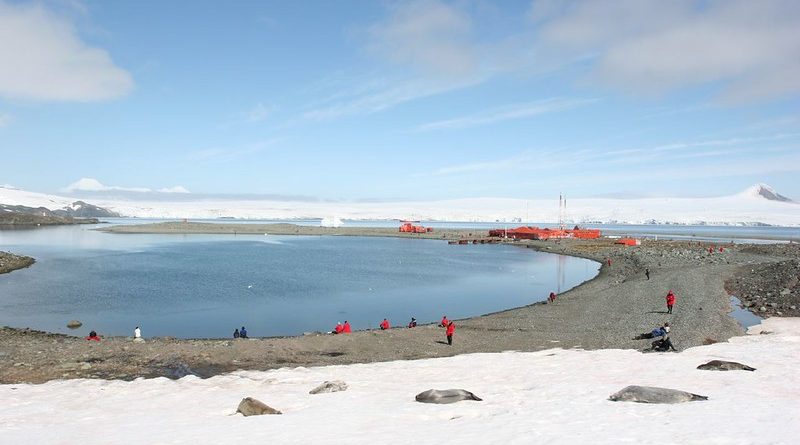Record January Heat and More Warning Signs From Antarctica
Axel Sontgerath
Staff Writer
According to the National Oceanic and Atmospheric Administration, this past January was the hottest in 141 years of recorded climate history. Global land and ocean surface temperatures were highest on record at 2.05 degrees Fahrenheit above 20th-century average. The last century’s January average boasted the only sub-freezing temperatures out of all the months in the calendar year, standing at 30.12 degrees Fahrenheit.
This has rapidly been increasing over the last 30 years, however. ABC News reports that average January temperatures from 1990-2020 were recorded just above freezing at 32.35 degrees Fahrenheit. The four warmest Januarys documented in the climate record have all occurred since 2016, while the 10 warmest have occurred since 2002. What’s more, NOAA has also determined that temperature departure from average was the highest monthly departure ever recorded without an El Niño present in the tropical Pacific Ocean.
Randall Crenny, meteorologist at Arizona State University and climate extremes expert at the WMO, told CNN, “our polar regions are kind of the canary in the mine…they are a more sensitive environment, so they are a warning system for other areas around the world.” The Antarctic Peninsula has warmed around 3 degrees Celsius (37.4 degrees Fahrenheit) over the last 50 years.
More warning signs have been presented in the month of February as the Argentine research base, Esperanza, on the tip of the Antarctic Peninsula set a new record temperature of 18.3 degrees Celsius (64.94 degrees Fahrenheit) on February 6, the World Meteorological Organization reports. The World Meteorological Organization (WMO) is still waiting for verification of the record, but many researchers are marking this as alarming additional evidence of warming in the Antarctic region, according to CNN.
These changes in climate have brought other warnings, by showing what exactly the effects of these changes are to the environment. According to CNN, there’s been a decline of Antarctica penguin colonies in Antarctica. This is not a new development, as a recent study found that penguin colonies on Elephant Island have nearly halved since 1971. According to Noah Strycker, ornithologist and penguin researcher at Stony Brook, climate change has removed krill, who depend on ice to survive, the main food source for penguins.
Another large natural event occurring at the hands of climate change is the large iceberg that broke from the Pine Island Glacier, one of the primary arteries in the West Antarctic Ice Sheet, the WMO reports. The Copernicus Sentinel satellite showed images of two large rifts in the glacier last year and this month an iceberg of 300 sq. km. broke off and floated away, breaking into many different pieces. For reference, this is about the size of Malta.
According to the WMO, the amount of ice lost annually in the Antarctic ice sheet increased at least six-fold between 1979 and 2017. Most ice loss takes place by the melting of the ice shelves from below the surface, due to warm water incursions. In the last 50 years, 87% of glaciers along the west coast of the Antarctic Peninsula have retreated.
Many events like the warming temperature and ice shelf rifts have slowly accrued over time and are now accelerating faster than ever. In a report for CNN, Ella Gilbert, a scientist who works at the British Antarctic Survey, had this to say about the climate events of January and February 2020: “Although we can’t take single events as an indication of a long-term trend, extreme events like these are becoming more common as the climate changes.”



